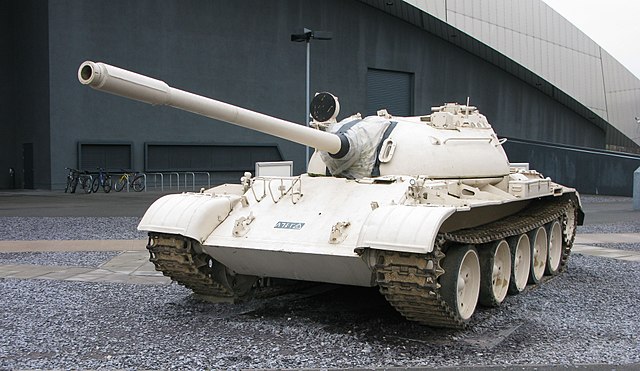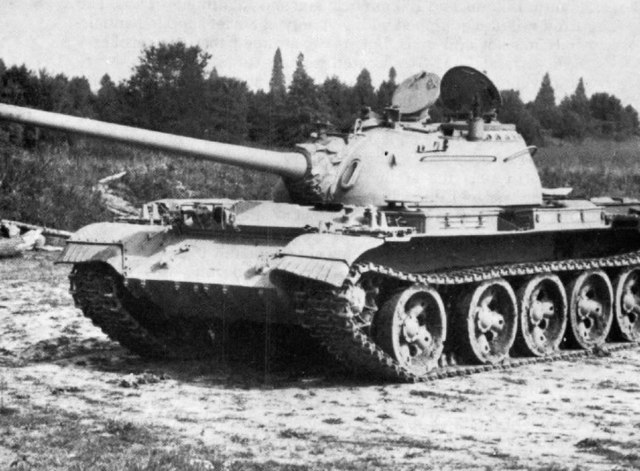The T-54 and T-55 tanks are a series of Soviet main battle tanks introduced in the years following the Second World War. The first T-54 prototype was completed at Nizhny Tagil by the end of 1945. From the late 1950s, the T-54 eventually became the main tank for armoured units of the Soviet Army, armies of the Warsaw Pact countries, and many others. T-54s and T-55s have been involved in many of the world's armed conflicts since their introduction in the second half of the 20th century.
A T-55 tank on display at the Imperial War Museum
The original T-54-1. It has a turret reminiscent of the T-34-85s, with prominent, undercut shot traps. This example has the fender machine gun boxes replaced with fuel tanks.
The original T-55 lacked an antiaircraft machine gun mount.
A Somali National Army T-55.
A main battle tank (MBT), also known as a battle tank or universal tank, is a tank that fills the role of armour-protected direct fire and maneuver in many modern armies. Cold War-era development of more powerful engines, better suspension systems and lighter composite armour allowed for the design of a tank that had the firepower of a super-heavy tank, the armour protection of a heavy tank, and the mobility of a light tank, in a package with the weight of a medium tank. The first designated MBT was the British Chieftain tank, which during its development in the 1950s was re-designed as an MBT. Throughout the 1960s and 1970s, the MBT replaced almost all other types of tanks, leaving only some specialist roles to be filled by lighter designs or other types of armoured fighting vehicles.
German Army Leopard 2A5 main battle tanks in 1996
Early model Mark I tank at the Battle of Somme, 1916
Abandoned French Hotchkiss H-39 light cavalry tank, Battle of France, 1940
New Panther tanks being loaded for transport to the Eastern Front







